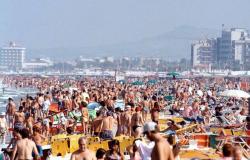
Rare Earths Norway, a private Norwegian mining company, has announced that it has found “the largest deposit” of rare earths in Europe. The company’s explorations focused on the Fen area in south-eastern Norway and revealed the presence of 8.8 million tonnes of total rare earth oxides, essential for the ecological transition. This is a much higher figure than the Kiruna deposit in Sweden, which contains between 1 and 2 million tonnes of rare earths and was until recently considered the largest reserve on European soil.
The new Fen field
Rare Eraths Norway announced in an official note that exploration work at Fen will continue throughout 2024 and an economic feasibility study of the project will be drawn up in the second half of the year. The Norwegian company plans to set up a pilot factory near the deposit, where it can test new technologies for extracting and processing minerals. The exploration, technology development and extraction activities should lead to an investment of 10 billion Norwegian crowns, just under 900 million euros, to start the first extraction activities by 2030. According to what was communicated by Rare Eraths Norway, the deposit of Fen could cover approximately 10% of the demand for rare earths in Europe.
Why rare earths are important
Rare earths are part of the so-called critical raw materials (in Italian, «critical materials»), i.e. all those raw materials considered essential for the ecological and energy transition. Rare earths, in more detail, are a group of fifteen chemical elements used mainly in electric cars, solar panels and wind turbines. According to a report published by the European Commission in 2022, EU countries are heavily dependent on China for access to these materials. In fact, Xi Jinping’s country represents 93% of the world’s production of rare earth magnets. At the same time, the Old Continent’s demand for these raw materials is constantly increasing: in 2019 it stood at 18 thousand tons per year, but by 2030 it could double to 40 thousand tons.
The dual European strategy
To free itself from Chinese dependence – and prevent what happened with Russian gas in the aftermath of the war in Ukraine from happening with rare earths – the European Union has developed a strategy based on two pillars. The first consists in the search for alternative suppliers to China. Through Global Gateway, for example, Brussels has made – and will continue to make – agreements to ensure the supply of the raw materials necessary for the ecological transition. The second pillar of the European strategy instead passes through the search for deposits on European soil and the creation of a raw materials recycling industry. In Italy, Minister Adolfo Urso announced a soil mapping process and the goal of reopening mines to cover at least some of the demand for critical materials.
Norway’s increasingly decisive role
With the discovery of the Fen rare earth deposit, Norway is on track to become a major supplier of critical raw materials to the European Union. The Scandinavian country is not part of the 27 EU countries but after the outbreak of the war in Ukraine it became an indispensable energy partner of several states of the Union. From a climate and environmental point of view, Norway’s strategy presents lights and shadows. Energy production, for example, occurs using decidedly cleaner sources than many European countries, with hydroelectric occupying a 66% share of the energy mix. Yet, after the diplomatic rift between the EU and Russia, the Scandinavian country has significantly increased oil and gas extraction. Not only that: at the beginning of 2024 Norway also became the first country in the world to support the deep sea mininga controversial practice that involves extracting minerals from the ocean floor.





